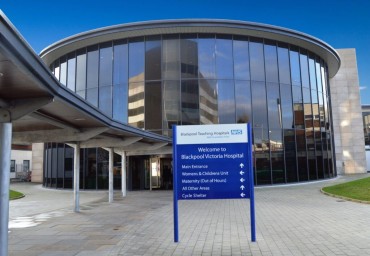You have recently had an implantable cardioverter defibrillator (ICD) or cardiac resynchronisation pacemaker with cardioverter defibrillator (CRT-D) implanted. This leaflet gives important information and advice about recovering from your implant procedure and living safely with your device.
You will have an appointment in the cardiac physiologist led device clinic in 4-6 weeks time. An appointment will be sent to you in due course. Please contact us if you have not received this appointment within 4 weeks.
It is important to attend regular checks in order to ensure the appropriate functioning of your device. Battery longevity, system
integrity and diagnostic data are all assessed at follow up checks and will determine when you will be seen again. This is usually
between 6 and 12 months as advised by the cardiac physiologists.
At this appointment:
• Your device settings will be reviewed and optimised.
• You will also receive your pacemaker identification card, which
you should carry with you at all times. You will be required
to show your ID card at airport security and when attending
hospital.
• You will be provided with a remote monitor which allows us to
monitor your device function from home.
• You will be reviewed by our cardiac device nurses who will
review and optimise your medications and examine your wound.
• You will be issued a ‘what to do in the event of shock’ leaflet.
It is important that you do not use the arm on the side of your implant to lift any heavy objects or for any strenuous pushing and pulling. We advise that you refrain from raising your elbow past shoulder height. Gentle movements are encouraged to avoid the shoulder becoming stiff.
The wound site will have internal stitches that dissolve and a special glue to close the skin. It is waterproof so you can take a bath or shower from 24 hours after the procedure, although do not soak the wound and just let water wash over the area.
Do not rub the wound with a cloth/sponge but gently pat the area with a soft towel. Do not pick the glue as it can lead to infection.
It will crystallise and fall off on its own. Avoid using moisturising creams/lotions until the wound has fully healed.
It is very important you keep an eye on your wound. If you notice any signs of infection (eg. redness, heat, discharge from the wound site) please contact the pacing team as soon as possible. You may experience pain and discomfort from the wound site for a few days post implant, which should improve over time. Over the counter pain relief should help with this.
You may also experience localised bruising (especially if you take blood thinners) which may last several weeks post procedure.
Please strictly follow the advice given to you by your Cardiologist
regarding driving. You must inform the DVLA about your device
implant.
Currently, the DVLA state that after an ICD/CRT-D implant, you are
not allowed to drive for:
• Group 1 (car/motorcycle)
- 1 month if you have never had a cardiac arrest.
- 6 months if you received your device after suffering from
a cardiac arrest.
• Group 2 (lorry/bus) – Licence will be permanently revoked.
If you receive a shock from your device, please cease driving and
contact the pacemaker team for further guidance.
Guidance is subject to change so please ensure you check the
DVLA website for up-to-date advice: www.gov.uk/guidance/
cardiovascular-disorders-assessing-fitness-to-drive.
Industrial machinery and electromagnetic devices may interfere with your device and should not be used without consulting with the pacemaker team first. You cannot weld with an ICD/CRT-D in situ.
Electromagnetic interference will not damage your device but may temporarily interfere with its settings while you are in contact with it. Most mechanical and electrical devices that you use in your normal daily activities will not affect your device. Household equipment will not affect your device as long as they are in good working order. Use mobile phones in the ear opposite to your device and do not place them in a pocket near the pacemaker.
Screening security systems in airports and ferry terminals very rarely cause problems. Show staff your pacemaker identification card and they will usually hand search you instead.
Unless you have been told otherwise you should continue all medications. If you have stopped any medication prior to the
procedure, you will be told when to restart that medication before you are discharged.
You can also contact your GP for advice within their opening hours. Do not attend A+E unless it is an emergency.



